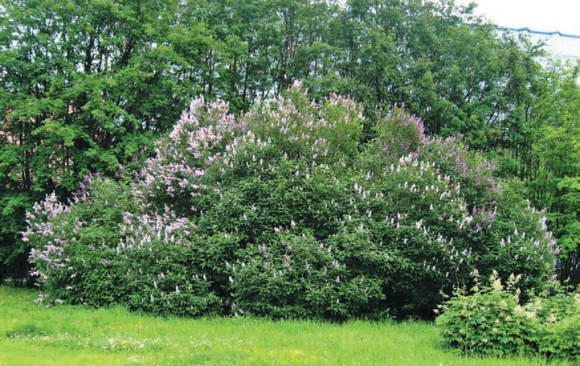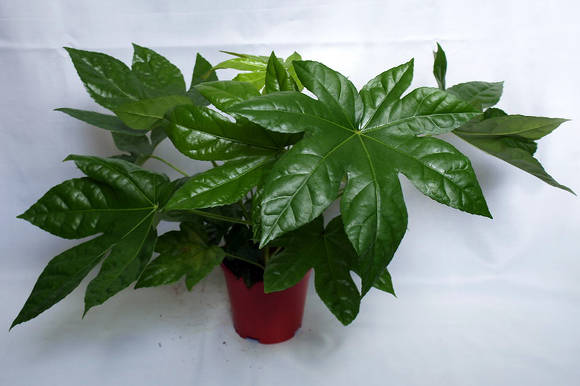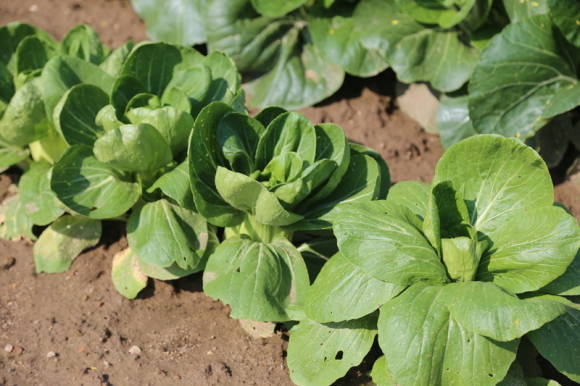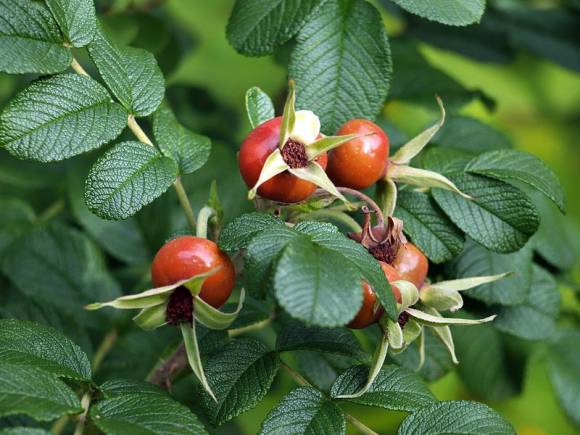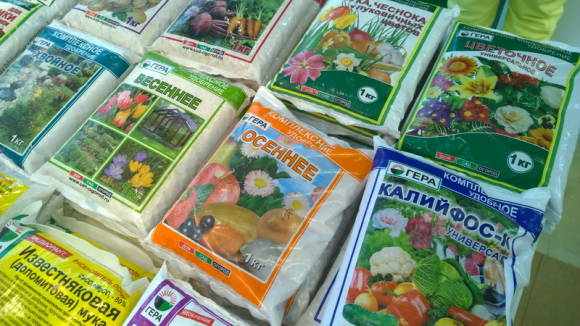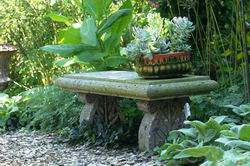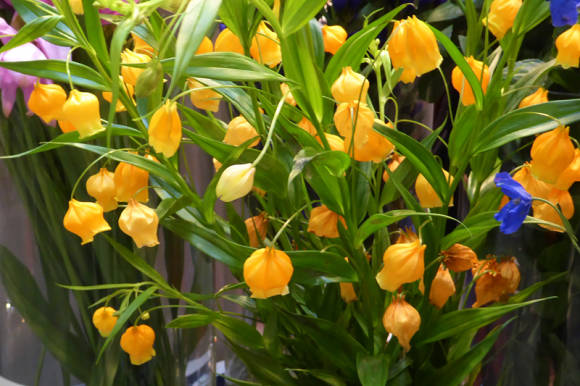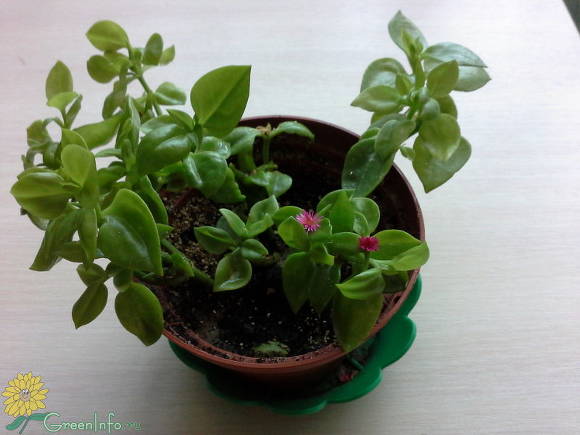
Aptenia cordifolia is an evergreen succulent that blooms with bright crimson flowers that resemble small asters. Its main decorative value is long, from spring to autumn, flowering, and open stems, which allow the plant to be used both as creeping and ampelous. The leaves and stems of the plant are covered with small shiny bubbles to store moisture, for which it is often called the Ice Plant. But this does not mean its cold resistance, this plant is thermophilic.
More about the plant - on the page Aptenia.
This is a South African plant that survives in nature that rainy season, then drought. Prefers sandy, drained soils. Therefore, when growing this plant, you need to pay close attention to compliance with the watering regime.
Keeping in unfavorable conditions (non-compliance with the temperature regime, poor lighting) often leads to the death of the plant. It should not be placed on a cold windowsill and exposed to cold drafts, because hypothermia of the root system, combined with waterlogging, leads to decay.
Priming... Aptenia loves sandy soils. For planting, use ready-made soil for succulents, adding a quarter of the volume of sand to it. The substrate for aptenia should be well-drained, not too rich in organic matter. Acidity - from weakly acidic to slightly alkaline (pH from 6.1 to 7.8).
Transfer... The plant is transplanted in the spring, as the earthen coma is developed, trying not to damage the thick fleshy roots. The plant is short-lived, so every 2-3 years it is necessary to renew it from cuttings. After transplanting, the plant is not watered immediately, maintaining a pause of 4-5 days, and begin to water in small portions.
- Soils and soil mixtures for indoor plants
- Transplanting indoor plants

Lighting... The need for light in Aptenia is high, otherwise the stems are elongated, and the flowers do not open. The best choice for the plant is the south-east or south-west orientation; on the south windows, with poor air ventilation in summer, burns are possible.
In the summer, aptenia can be taken out into the garden, placed in a rock garden or rockery, on a retaining wall even in direct sunlight, but only after a certain period of adaptation in partial shade.
Temperature... The active growing season and flowering are in the spring and summer. At this time, the plant requires an air temperature within + 22 ... + 25 ℃.
Dormant period... In autumn and winter, the plant is at rest. The temperature of the content at this time should be reduced to + 8 ... + 10 ℃. If there is no cold period, aptenia may not bloom later.
Watering... During the period of active growth, the aptenia is watered so that the soil has time to dry completely between waterings, otherwise the fleshy root system of the plant, and then the stems, may rot. Never water the aptenia if the soil is moist and cold.
During the dormant period, water is less often - so that the leaves do not have time to lose turgor.
Read more in the article Watering rules for indoor plants.
Air humidity... Spraying aptenia is not necessary, it is enough to occasionally wash it under a warm shower (but not during the rest period). She tolerates dry indoor air well, but does not like hot air from heating devices.
Top dressing applied only in the spring-summer period on a monthly basis, using a complex mineral fertilizer for succulents with trace elements. Instead, it is possible to apply long-term fertilization once a season, in early spring. During the dormant period, they do not feed.
Excess fertilization leads to the development of weak, flexible stems with long internodes. After transplanting into fresh soil, the plant can not be fed at all.
Read more in the article Top dressing of indoor plants.
Pruning plant is easily tolerated.It is best done in autumn, so as not to deprive aptenia of flowering. If during the winter the shoots are very stretched and bare, you can cut off such shoots no later than February.
It is advisable to use the remaining sections of the stems for rooting. Autumn reproduction makes it possible to get flowering in the coming spring.
Bloom aptenia begins in April and can last until autumn. A prerequisite for good flowering is the passage of a cold dormant period and sufficient lighting.
Reproduction of aptenia
Aptenia is propagated by seeds and cuttings.
Seed reproduction... The main difficulty in seed reproduction is rotting crops from excess moisture, so watering should be careful, with regular ventilation.
Seeds are sown on the surface of the soil without covering. Germinated in the light at a temperature of + 21oC. Seedlings appear quickly, they need good lighting and a gradual reduction in the amount of watering. After a month, the plants dive, and later they are planted in small pots (5-7 cm in diameter) one at a time and grown at a temperature of + 16 ... + 18оС.
Cuttings... Cut cuttings are dried in a dark, dry place for several hours. Rooted in purchased soil for succulents with the addition of sand. The process takes 3 weeks. Aptenia is growing rapidly or moderately.
Read more in the article Cutting indoor plants at home.
Possible difficulties in growing aptenia
Falling leaves - occurs due to waterlogging, as well as overdrying. If the leaves fall off during the dormant period, this indicates that the permissible temperature of the content has been exceeded during this period - the plant can be saved if it is gradually transferred for a while to a bright and cool room with a temperature of + 8 ... + 10 ° C.
The plant does not bloom due to non-observance of the lighting regime during the rest period or with a lack of light.
The plant rots due to excessive watering or excess nitrogen fertilization.
Photo from the GreenInfo.ru forum

